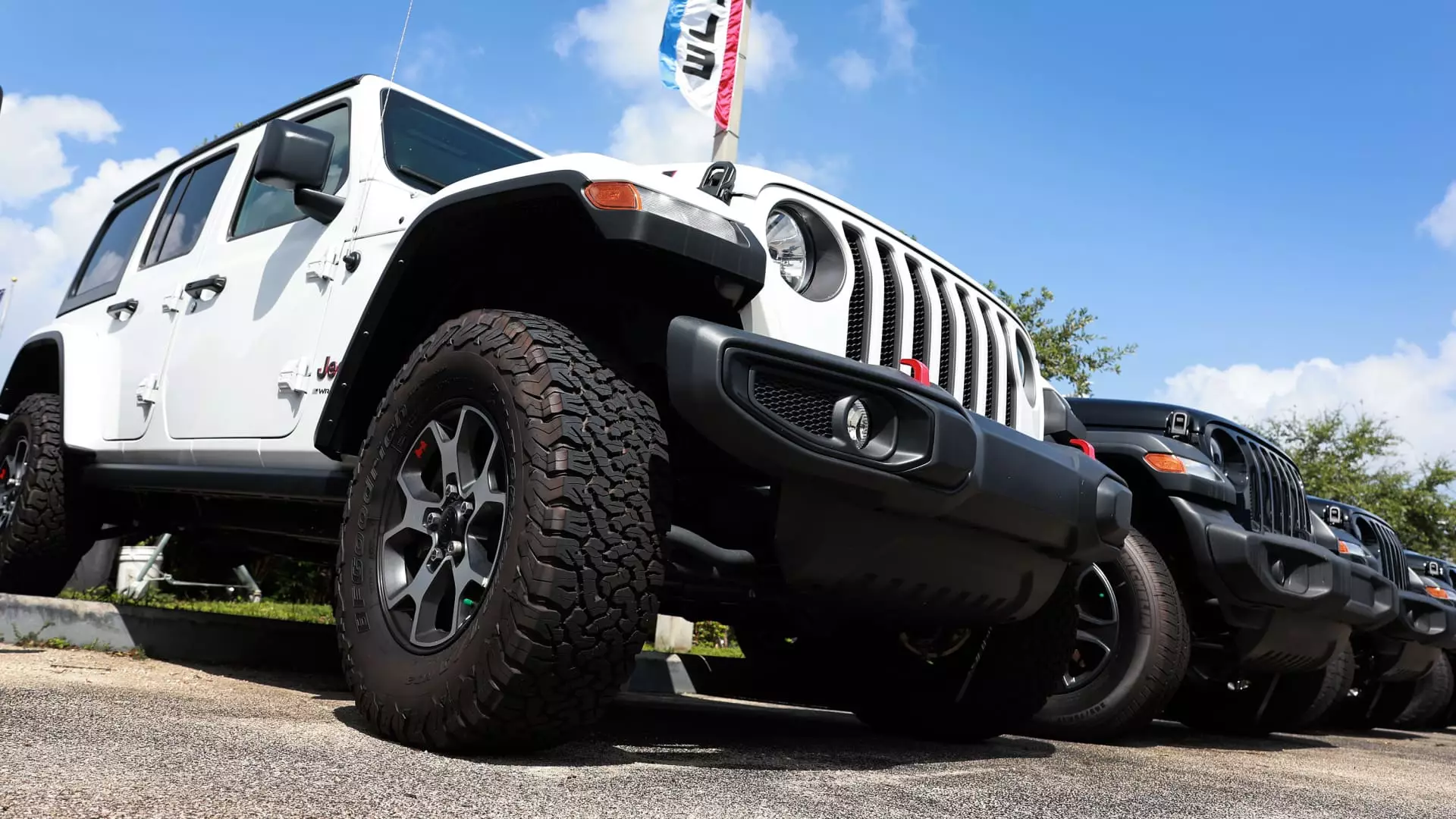As the automotive industry navigates through the tumultuous waters of economic uncertainty and rising costs, new vehicle sales in the United States are projected to face setbacks in the third quarter of 2023. According to analyses from renowned industry forecasters such as Cox Automotive and Edmunds, there is an anticipated decline of approximately 2% in new vehicle sales, suggesting that around 3.9 million units will be sold during this period. This forecast indicates a more pronounced dip of about 5% when juxtaposed with the sales figures of the preceding quarter, reflecting the deeper impacts of inflation and elevated interest rates on consumer purchasing power.
The economic landscape is influenced by a host of factors, including national political dynamics and decisions made by the Federal Reserve regarding interest rates. Although the recent rate cuts are optimistically seen as a constructive move, economists caution that such measures alone may not guarantee a surge in auto sales as the year progresses. Charlie Chesbrough, a senior economist at Cox Automotive, emphasizes that, while there is hope for improvement, affordability remains a critical hurdle that must be surmounted to uplift market conditions: “Affordability remains the main obstacle to a stronger market,” he noted, reflecting the challenging environment many consumers face.
A significant issue currently facing the automotive market is the affordability of new vehicles. With the average financing amount for a new car hovering around $40,000, many American consumers are finding it increasingly difficult to make purchases. Jessica Caldwell, head of insights at Edmunds, underlines the constraints of the current market: “Who can afford new cars seems to be the big issue.” This affordability dilemma is creating a chokehold on sales, limiting the purchasing power of a large segment of consumers who might otherwise consider entering the new vehicle market.
Even though the average transaction price for new vehicles has seen a slight decline compared to last year, it remains historically high at approximately $47,870. Such prices create an environment where choices for buyers are limited, pushing potential customers either toward used vehicles or to explore other alternatives altogether.
In the competitive landscape of the automotive sector, there are significant disparities in growth and performance among major manufacturers. Industry predictions suggest that General Motors and Ford are poised to experience growth this quarter, while companies like Stellantis, Toyota, and BMW could see drastic reductions in sales. Stellantis, in particular, has come under scrutiny for its considerable decrease in market presence, with sales potentially plummeting by as much as 21%. Under the leadership of CEO Carlos Tavares, there seems to be a strategic pivot focusing more on pricing stability and profit margins rather than maintaining market share—a shift that could have longer-term implications.
Furthermore, while electric vehicle (EV) sales are increasing, their growth trajectory is not as robust as many anticipated. The forecast suggests an approximate 8% rise in EV sales for the third quarter; however, this is notably contrasted by a projected decline in sales for the sector’s leader, Tesla. With Tesla’s market share expected to drop below 50% for the second consecutive quarter, a potential fork in the road looms for the EV segment.
Incentives and the Future for EVs
Despite the fluctuations in sales, one significant trend is the rising importance of incentives in driving EV purchases. With government-backed incentives playing a pivotal role in consumer decisions, the proportion of incentives related to EV sales has burgeoned to 13.3% of the average transaction price. In comparison to traditional combustion engine vehicles, this figure represents a staggering increase of over 80%, reflecting a conscious effort by policymakers to promote sustainable car ownership. Federal credits, which can reach up to $7,500 for qualifying vehicles, serve as a catalyst for buyers, though it is crucial to note that not all new electric models are eligible for such incentives.
As we move forward through 2023 and into 2024, the automotive sector remains in a state of flux. The interplay of economic challenges, market dynamics, and consumer behavior is reshaping the landscape. The question remains: will the incentives and strategic adjustments by manufacturers be enough to spur growth in a market that is becoming increasingly complex? Only time will tell, but the indicators suggest that a cautious optimism may be warranted in planning for the future.

